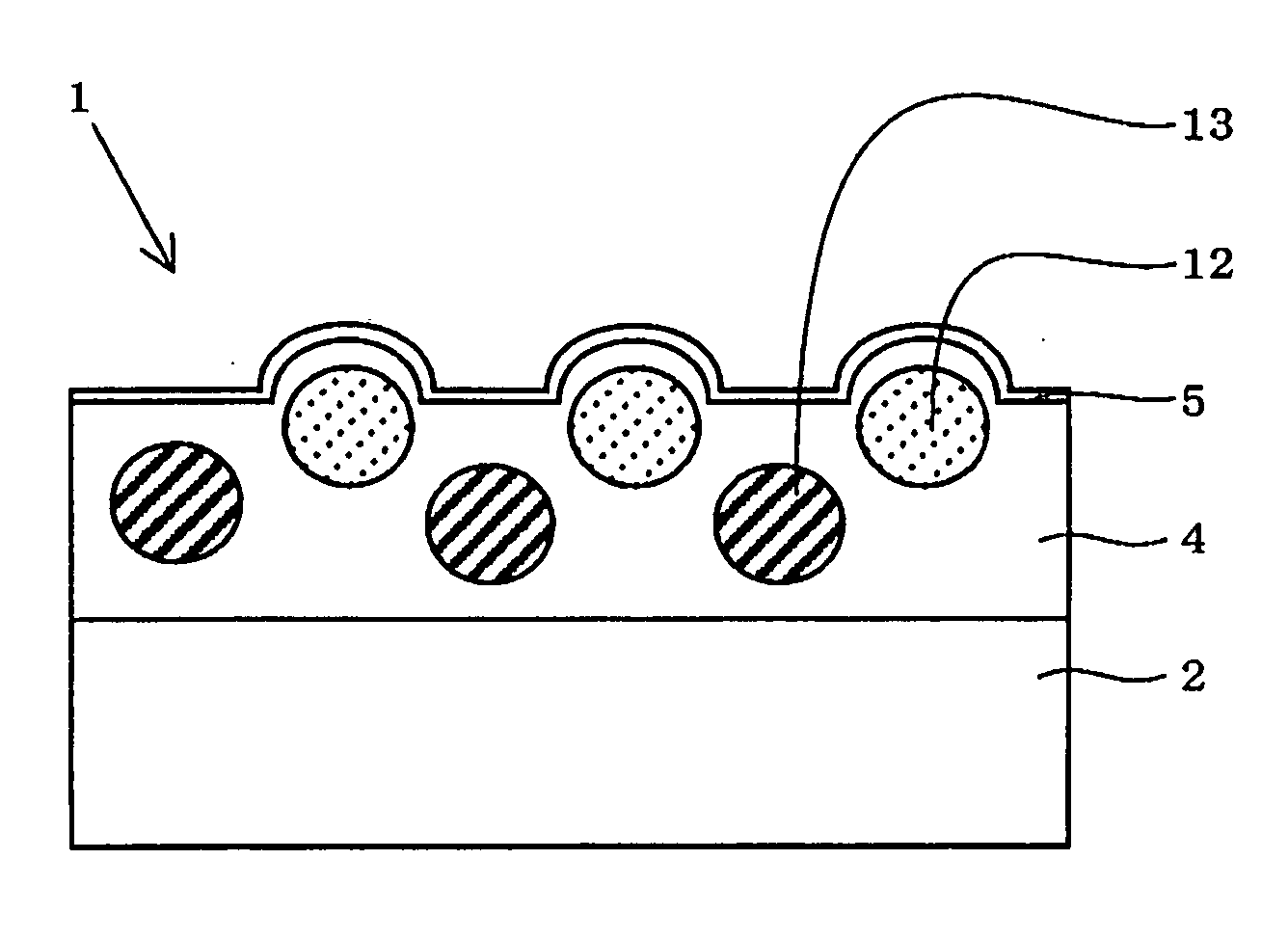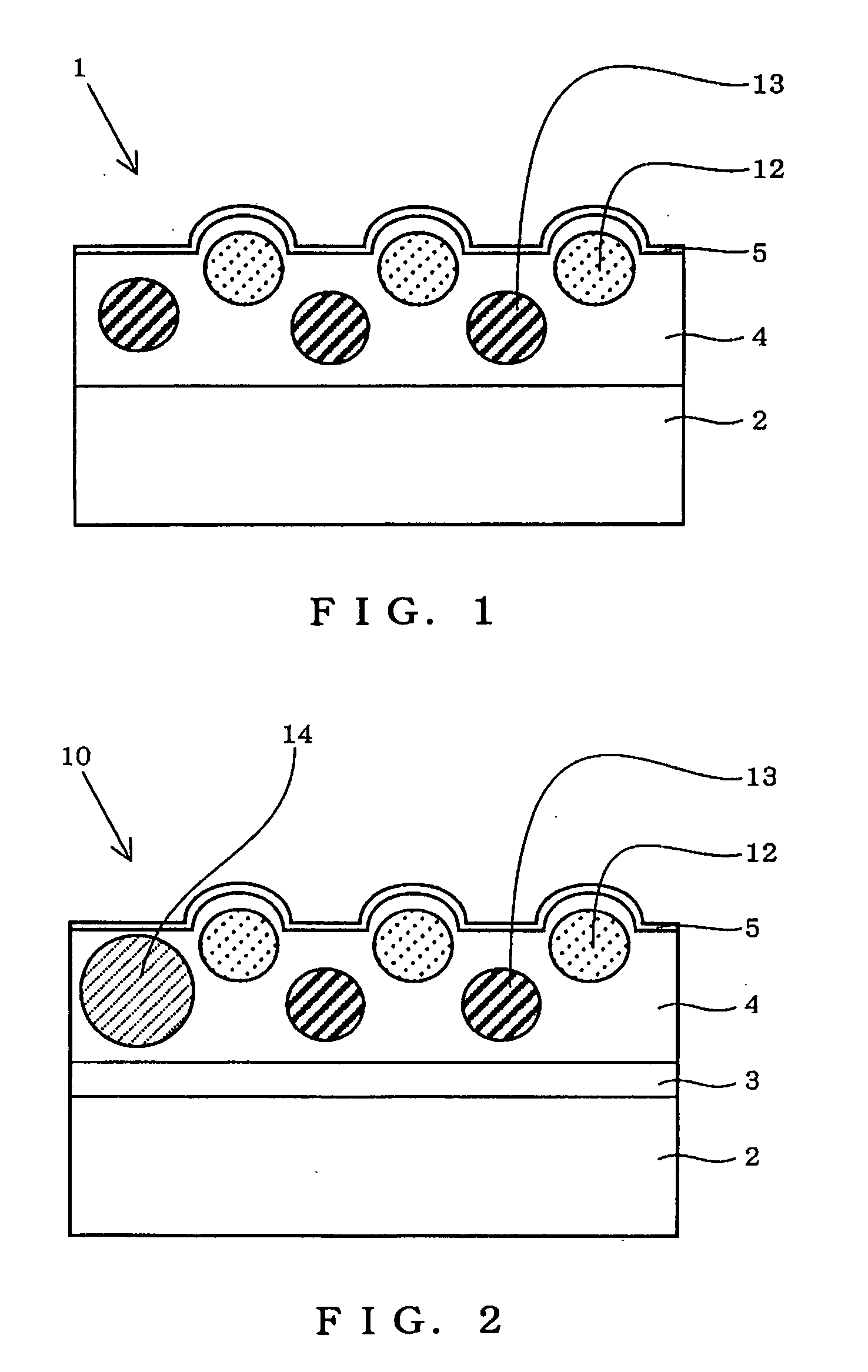Anti-dazzling film
a technology of anti-glare and film, applied in the direction of polarising elements, instruments, ways, etc., can solve the problems of uneven layer thickness uneven surface hardness, etc., and achieve the effect of satisfying surface hardness
- Summary
- Abstract
- Description
- Claims
- Application Information
AI Technical Summary
Benefits of technology
Problems solved by technology
Method used
Image
Examples
example 1
[0222] (1) Coating of Anti-Dazzling Layer
[0223] An 80 μm-thick triacetylcellulose film (TD80U: tradename, manufactured by Fuji Photo Film Co., Ltd.) was wound off in a roll form, and coating liquid 1 for an anti-dazzling layer prepared in the above step was coated to a coating a thickness of 7 μm on a dry basis, and the coating was dried at 110° C. for one min to remove the solvent. The coating was then photocured under nitrogen purge (oxygen concentration: not more than 200 ppm) by irradiation with ultraviolet light at 55 mJ to form an anti-dazzling layer which was then wound.
[0224] (2) Coating of Low-Refractive Index Layer
[0225] The triacetylcellulose film coated with the anti-dazzling layer was again wound off and was coated with coating liquid A for a low-refractive index layer to a thickness of 100 nm on a dry basis. The coating was dried at 120° C. for 70 sec, was further dried at 110° C. for 10 min, was heat cured, was irradiated with ultraviolet light at 120 mJ under nitr...
examples 2 to 36
[0253] Example samples 2 to 36 and Comparative Example samples 1 to 7 were prepared in quite the same manner as in Example sample 1, except that the coating liquid for an anti-dazzling layer and the coating liquid for a low-refractive index layer were varied as described in Tables 4 to 6.
example 37
[0254] An antistatic layer (AS layer) was coated onto a triacetylcellulose film under the following conditions. Coating liquid 40 for an anti-dazzling layer was coated onto the antistatic layer in the same manner as in the sample of Example 29, and coating liquid B for a low-refractive index layer was coated onto the anti-dazzling layer in the same manner as in the sample of Example 29.
[0255] (Preparation of Antireflection Film with Antistatic Layer)
[0256] A coating liquid for an antistatic layer was coated onto a triacetylcellulose film to a thickness of 1.2 μm. The coating was dried at 70° C. for one min and was then irradiated with UV light (ultraviolet light) at 54 mJ under nitrogen purge for half-curing. Next, coating liquid 40 for an anti-dazzling layer was coated onto the antistatic layer to a thickness of 7 μm. The coating was dried at 110° C. for 20 sec and at 50° C. for 20 sec, and the coating was exposed to UV light at 55 mJ under nitrogen purge for half-curing. The com...
PUM
| Property | Measurement | Unit |
|---|---|---|
| refractive index | aaaaa | aaaaa |
| refractive index | aaaaa | aaaaa |
| refractive index | aaaaa | aaaaa |
Abstract
Description
Claims
Application Information
 Login to View More
Login to View More - R&D
- Intellectual Property
- Life Sciences
- Materials
- Tech Scout
- Unparalleled Data Quality
- Higher Quality Content
- 60% Fewer Hallucinations
Browse by: Latest US Patents, China's latest patents, Technical Efficacy Thesaurus, Application Domain, Technology Topic, Popular Technical Reports.
© 2025 PatSnap. All rights reserved.Legal|Privacy policy|Modern Slavery Act Transparency Statement|Sitemap|About US| Contact US: help@patsnap.com



